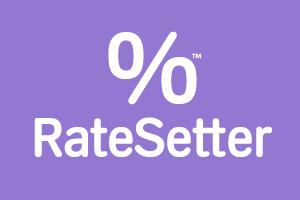| « Peer-to-peer lending concept | Funding Circle rate change comments » |
RateSetter P2P returns
There was a comment made on the P2P money blog recently from one of RateSetter's lenders. Alex Gower, RateSetter's Marketing Director, asked if he could respond to this comment, which we were more than happy to facilitate.
I wanted to respond to the poster who commented upon the returns he was getting from RateSetter and explain the principles of how returns are calculated. The simple answer is that calculating P2P returns can be complex and sadly is not a straightforward exercise. I will do my best to explain:
This simplest example I can give you is the RateSetter One Year Bond - the last matched rate today was 3%.
If you invested £2,000 in the 1 Year Bond at 3% today, you would receive at the end of the one year term £2,060. We pay this amount gross to lenders, and it is their responsibility to pay tax on this (at the same rate they would with a bank savings account).
Interest is calculated and accrues each and every day the money is on loan according to the base rate (which you can see in the contract). The interest compounds up to create the 3% at the end of the term - this is calculated in a similar way as an AER from a bank.
Our Monthly Access account works in the same way, with a 30 day contract - lenders are paid all the capital and accrued interest after 30 days, and you choose to continue to lend or withdraw.
RateSetter Lenders do not suffer the problem of bad debt in the same way as they do on other peer to peer platforms - RateSetter protects Lenders using a Provision Fund (http://www.ratesetter.com/lending/provision_fund.aspx), the concept we pioneered when we launched. It’s designed to ensure that peer to peer lending is as simple and safe as we can make it, and has over £1m in it to protect Lenders. The Provision Fund has ensured that every single lender has received every penny of capital and interest - the only P2P company to have achieved this.
So far, so (relatively) simple!
Where it becomes more confusing is with the longer term markets (3 Year Income and 5 Year Income). Unlike a savings account, these markets are amortizing - that is, the capital and interest is paid back in monthly instalments by the borrower. This is clearly different to a savings account - banks rarely force you to draw down your money…! This creates a challenge - the lender has to make a decision what to do with these repayments. We allow lenders to set “Reinvestments Settings” which decide what to do with these repayments - reinvest (at Your Rate or the Market Rate), reinvest in a different market, or withdraw the money. Similarly, you may receive “early repayments”: borrowers are allowed to repay some or all of their loan at any point during the term of the loan with no penalty. Whilst this is good for lenders (who get their money back), it means that the contract ends and needs to be replaced with a new one. These are treated in the same way as repayments according to the Reinvestment Settings.
Rates are calculated in the same way as the 1 Year Bond example, but - to give a fair comparison with an AER - assume that you will reinvest those monthly repayments at the same rate you originally lent at.
So the key point is: Rates are fixed to the contract, but the return is variable; it is dependent on the variation in terms that borrowers eventually take, and the variation in rates on the contracts you match whilst you are invested. So, to achieve quoted rates, the expectation is that you continually reinvest your money (at the same rate as the contract states) and achieve the compounding effect. This is how all P2P companies display their rates to overcome these quirks of peer to peer.
The key point is that you earn interest on money that is on loan: it’s a central principle of P2P that you only earn interest on what is on loan at any given time. So over time, you will end up with (probably hundreds of) different contracts earning differing rates, but knowing that whenever money is out on loan it is earning interest. You also have the comfort that all of your contracts are covered by the protection of the Provision Fund.
Calculating an accurate return therefore is not necessarily possible: the rates give a good guidance to what you are going to return but necessarily have to make assumptions about the future. We are however proud to say that we have returned lenders the capital and interest they have expected, and that has been reflected in the growth that we have seen.
Finally, the tax point is important to consider for those investing in p2p - we would always recommend that people take whatever tax efficient allowances they can, such as ISAs. The sad reality is that people quickly exhaust those allowances, and few options offer a similar return with as low a risk as lending on RateSetter. Our bad debt rates (absorbed by the fund) are exceptionally low (0.35% of funds matched) and tell the tale of an exhaustive and exceptionally cautious credit policy, which approves only 10% of people who apply for a loan.
